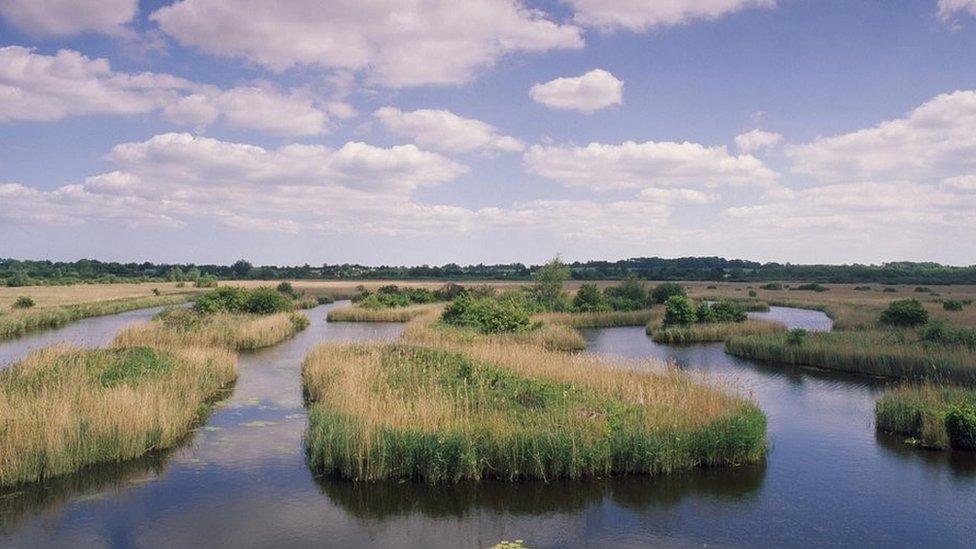Suffolk Broads gateway restoration work begins
- Published
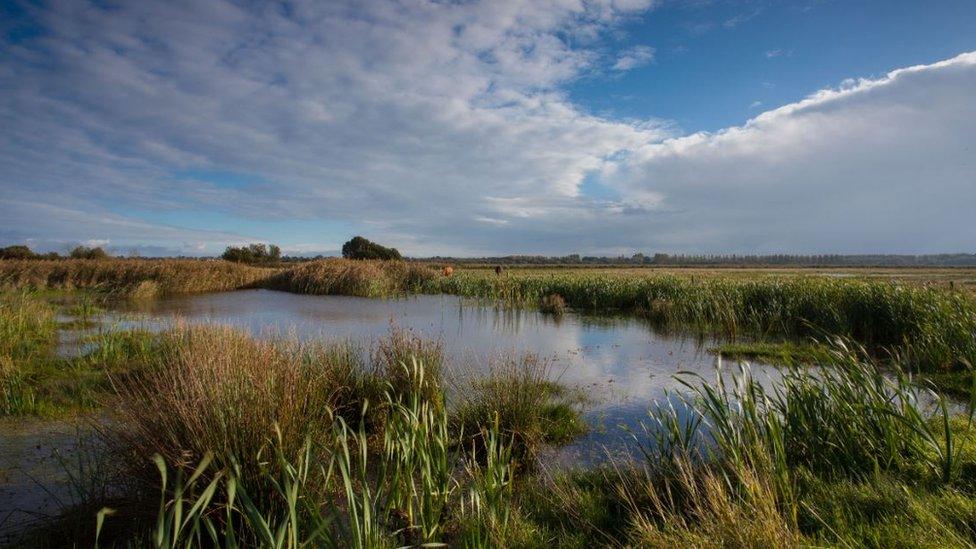
Broads manager Matt Gooch said Suffolk Wildlife Trust was "almost in touching distance of a truly spectacular reserve"
Work has begun on the £5m restoration of a wetlands habitat which has been backed by television naturalist Sir David Attenborough.
Suffolk Wildlife Trust has bought land flanking its Carlton Marshes reserve to create a 1,000 acre (404 hectare) southern gateway to the Broads.
It said it would provide a home to "iconic East Anglian species", adding the work included a visitors' centre.
Sir David said the project presented a "unique opportunity" for wildlife.

Sir David Attenborough is president emeritus of The Wildlife Trusts
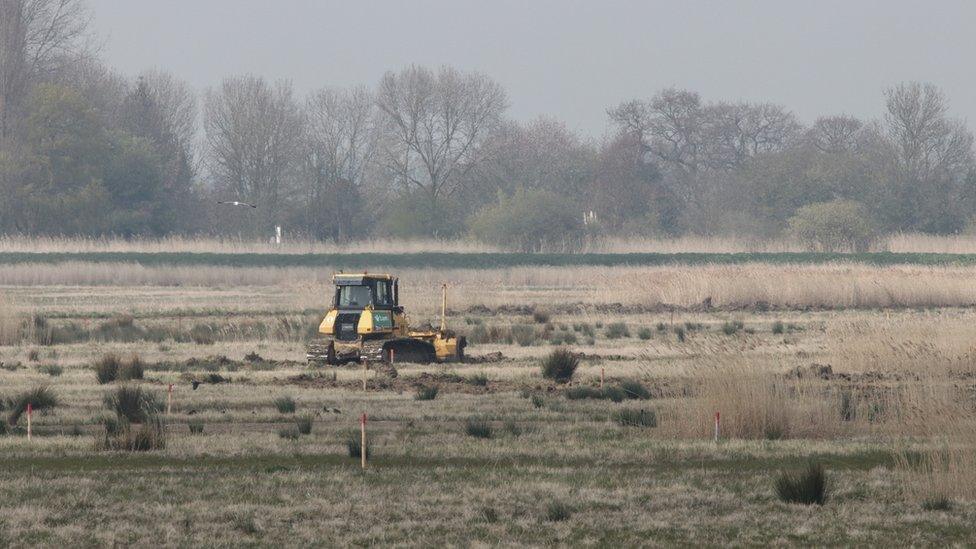
Restoration work was due to be done in stages over three years but will now take six months
The 348 acre (140 hectare) land purchase was the biggest in the trust's 55-year history.
It was funded by a £4m grant from the National Lottery Heritage Fund, while a fundraising appeal raised a further £1m.
Julian Roughton, chief executive of Suffolk Wildlife Trust, said the reed bed, fen and wetland areas would "support some of East Anglia's iconic species, such as fen raft spider, marsh harrier, bittern and crane".
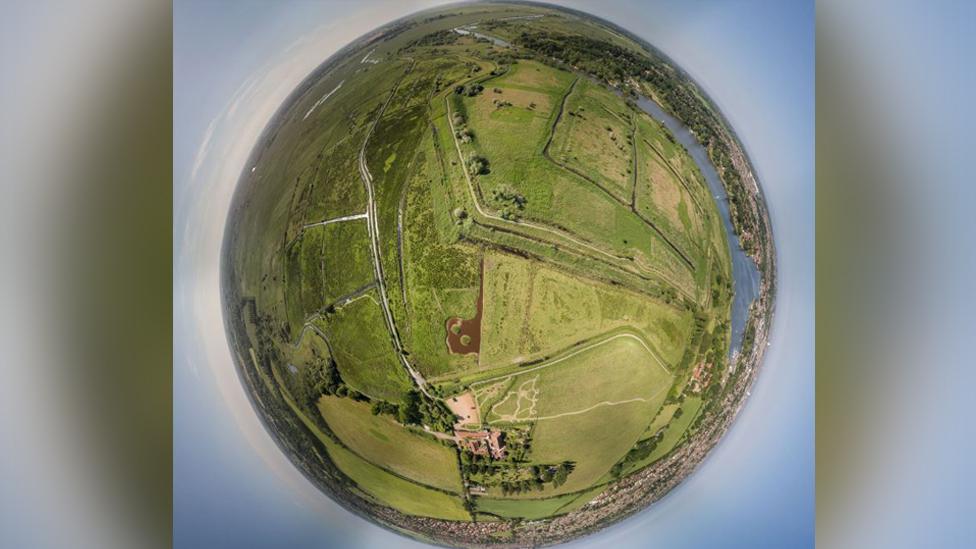
Years of detailed planning went in to deciding how to restore the land
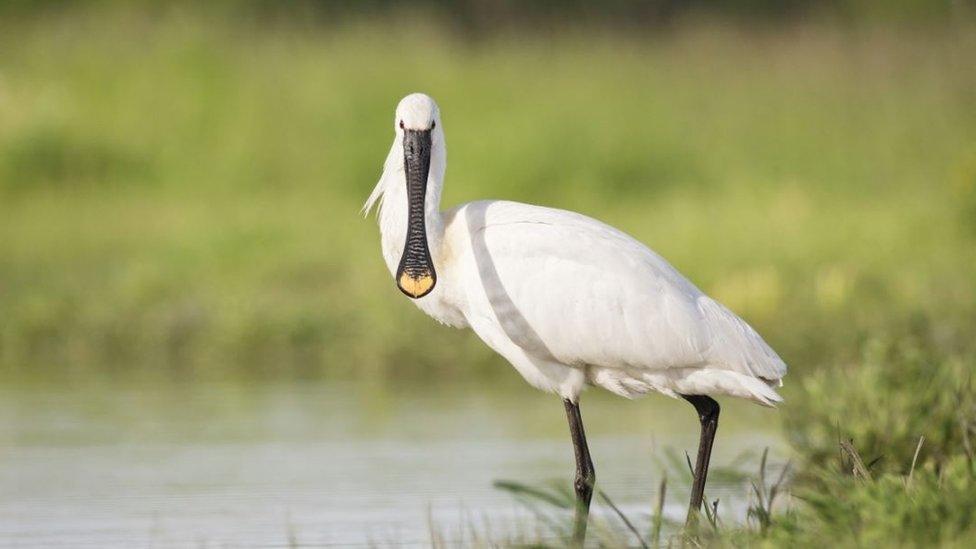
The increase in muddy areas at the site due to heavy machinery is likely to lead to an immediate increase in bird numbers
Contractors will take six months to create the wetlands.
It involves digging out scrapes - shallow pools suitable for wading birds - and the creation of reed beds.
The trust predicts the reserve, which is in north east Suffolk and close to Lowestoft, will attract 120,000 visitors a year.
Sir David, who is president emeritus of The Wildlife Trusts, said: "England's wildlife is under great and ever-growing pressures.
"It is vital we restore our land on a landscape scale so it can support more wild plants and animals."
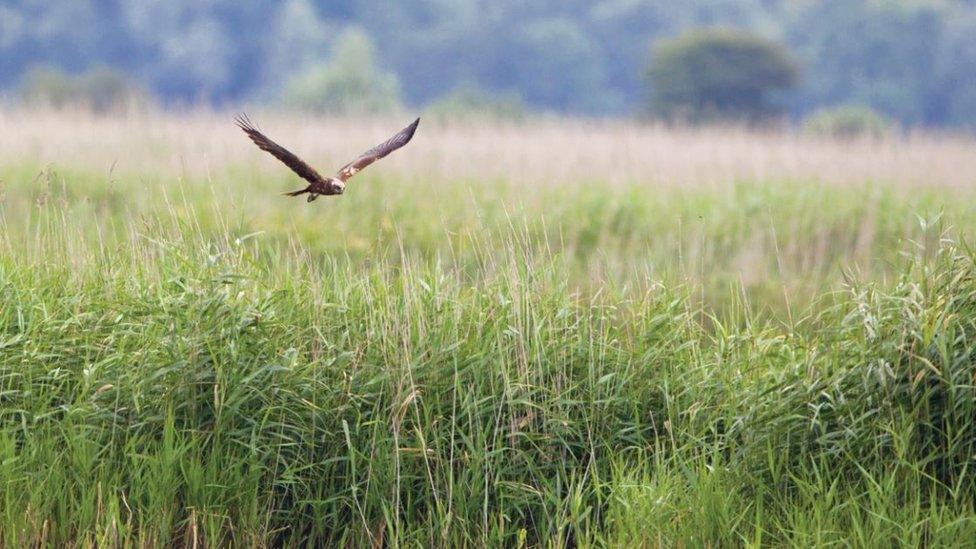
The aim was to create "a breathtaking panorama of wildness stretching from horizon to horizon", Suffolk Wildlife Trust said
- Published28 March 2019
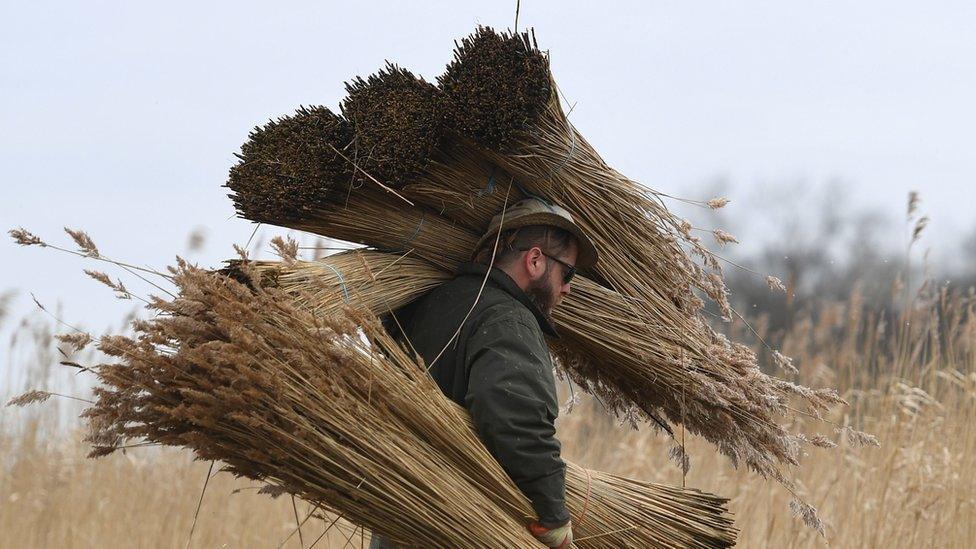
- Published25 October 2016
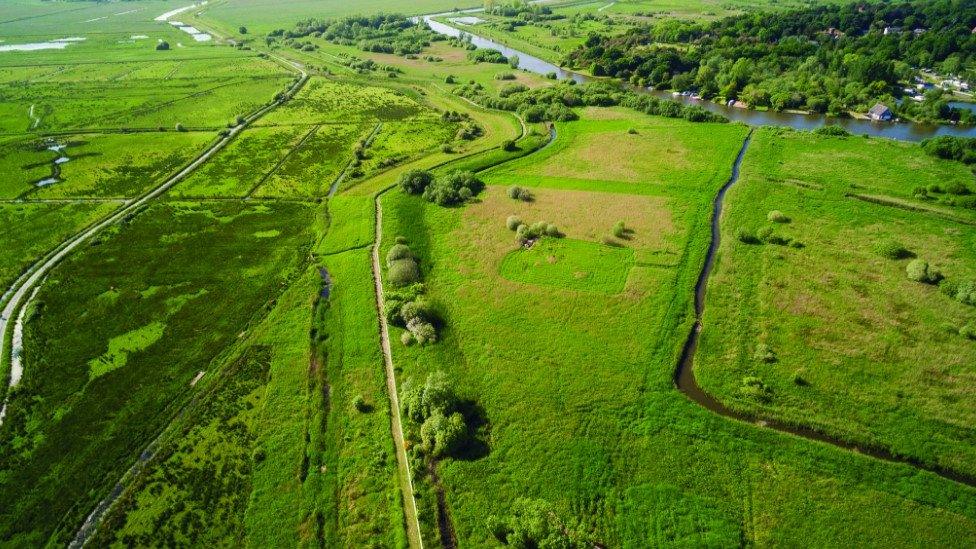
- Published29 July 2016
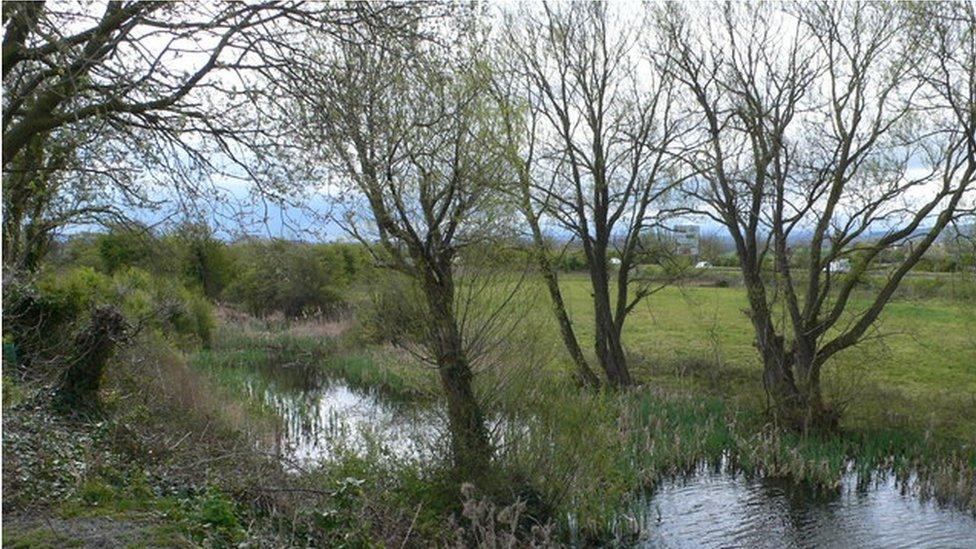
- Published23 January 2015
